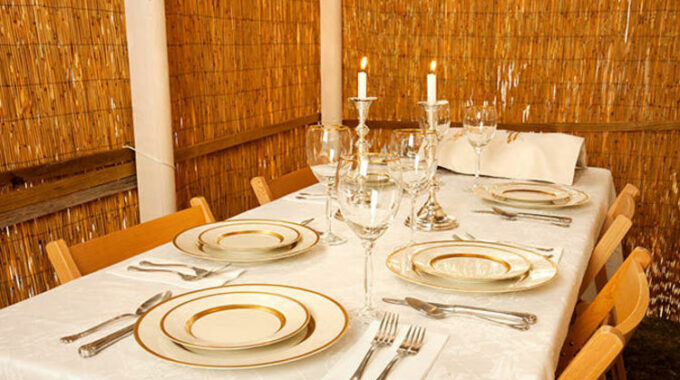Adapted from the writings of Dayan Yitzhak Grossman April 18, 2024 AP News reports: A…

Q&A from the Bais HaVaad Halacha Hotline
Unter Dem Tisch
September 28, 2023
Q I have little room in my sukkah. May I sleep under the table?

A The Mishnah (Sukkah 20b) records the story of Tavi, Rabban Gamliel’s slave, who would sleep in the sukkah under a bed, and says that Rabban Gamliel sang Tavi’s praises for knowing that slaves are exempt from the mitzvah of sukkah. The Mishnah infers from this that one who sleeps under a bed does not fulfill the mitzvah of sukkah.
The Gemara (ibid.) explains that Tavi’s bed was 10 tfachim high, which qualifies as an ohel (shelter), and someone sleeping under such a bed is not considered to be in the sukkah. If it’s lower, the bed is not an ohel but part of the sukkah, and one may sleep under it. This halacha is codified in Shulchan Aruch (O.C. 627:1).
According to R’ Chaim Na’eh, 10 tfachim is 31.5 inches. Standard dining tables in the US are about 28-30 inches high, so most will qualify. This is so even if a tablecloth forms cloth walls around the area beneath the table (Shulchan Aruch ibid. 2).
If the table is 10 tfachim or higher, and your sukkah space is limited, you may put your legs under the table while your head and most of your body are under the sechach. You may rely on this even lechat’chilah (Halichos Shlomo 9:2). Though you might shift while you sleep and move further under the bed, that would be an oness (Chut Shani 11:15).
Several Rishonim say that sleeping under a 10-tefach bed is a problem only mideRabanan (Sha’ar Hatziyun ibid. 1). According to this view, if the only alternative is sleeping indoors, you should sleep under the bed, because fulfilling the mitzvah mide’Oreisa but not mideRabanan is better than not at all (Kaf Hachaim ibid. 1).





